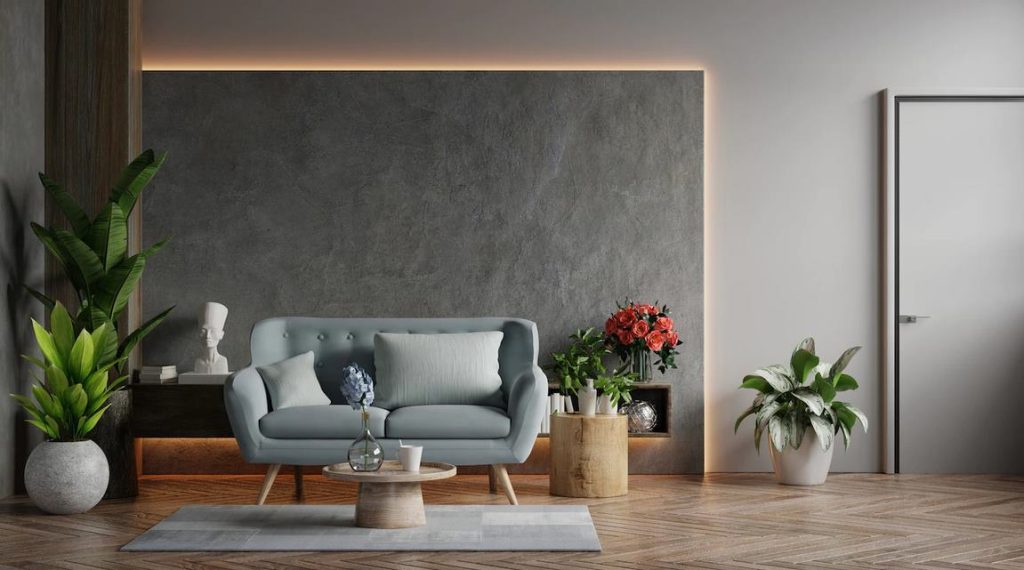As recently as a couple of centuries ago, décor styles found in houses were fairly limited. Homes and buildings were designed by architects and any interior features were driven by the input of architects, builders or craftsmen, with possibly small contributions from the homemakers (in the case of a domestic structure).
Since the industrial developments of as recently as just over a century ago, and ongoing advances since then in the creation of new materials (some manmade, eg, moulded plastics, and some reconstructed organic materials. eg, plywood), the potential of using these elements in furniture manufacture and homes led to creative initiatives by those with imaginative brains. The outcome is that, nowadays, we have a plethora of design styles to choose from.
Below is a brief overview of (most of) the design styles in use today.
- Traditional – This is probably still the ‘oldest’ style in use, as it maintains the traditional look of opulence, if a bit fussy, with curved lines, plushness, solid woods, lots of beiges and natural colours.
- Art Deco – This was one of the first ‘new’ design styles to emerge after the industrial era. It started in the early 20th century, but is still a popular design style for some to this day. The style epitomises a streamlined look with curved edges and some geometric shapes too.
- Mid-century Modern (MCM), or Modern – this style came into play after WWII, when more modern materials became available. There are many famous designers that came out of this era – check out Bauhaus design, Mies van der Rohe’s Barcelona chair, the Jacobson ‘Egg’ chair and ‘Ant’ chair, the Eames chair, Eero Saarinen’s ‘Tulip’ table, and more….. These furniture designs are still very much in demand and have been reproduced and ‘knocked off’ time and again.
- Contemporary – This is a term that encompasses the more current styles in use today. I believe that the following ‘sub-styles’ also fall within this style category :
- Minimalist – This style consists of, quite literally, the bare minimum of furnishings in a house, with little or no décor, just the main essentials required for living. Clean, simple lines, nothing fussy with everything stored out of sight.
- Maximalist – here, we have the exact opposite of minimalist. A lot of busy-ness, décor items, art, plants, rugs and things on display, possibly some clutter, even.
- Transitional – Where traditional meets contemporary: a blend of two elegant styles (my personal favourite). This style gives a home a modern, yet elegant and comfortable feel. There is a lot of room to play within the two styles… one can go more modern and linear, or lean towards the more elegant, traditional feel, or simply find a middle ground. And most accessories, such as lighting, hardware (handles, etc) and sanitaryware. fit right in.
- Scandi – as the word suggests, this style is taken from the Scandinavian design style of clean lines, light and airy feel, pale wood tones, soft textures and bringing the outdoors inside, either with doors opening to greenery, or with indoor plants, or both.
- Japanese Zen – this style is very similar to Scandi, light and airy with large windows, lots of natural light and clean lines. It’s basic, relaxing and streamlined. There is some use of bamboo, though the wood tones, however, tend to be a bit darker.
- Rustic – Here, again, one can break this down into sub-styles. As the name suggests, the finishes in a rustic styled home are more relaxed, or casual. One could also say ‘unfinished’ or unpolished. There are 2 or 3 styles that could fall under this main heading:
- Farmhouse (Traditional & Modern) – this is pretty much self-explanatory – ‘traditional’ is comfortable, traditional farmhouse furniture using traditional fabrics. ‘Modern’ farmhouse is still cosy with simpler, uncluttered lines and neutral colours, bringing in a bit of nostalgia with the occasional antique and some reclaimed wood here and there.
- Country – This style is similar to farmhouse, although with a bit more ‘twee’ to it. The fabrics used are perhaps a bit more floral, the furniture a bit more curvy and the colours a bit richer.
- Shabby Chic – This style involves the use of recycled furniture that has seen many layers of paint over the years, and allowing those layers to be seen through the wear and tear of use. Shabby Chic is also considered by some to fall under the Boho style of décor.
- Grandmillennial – So many Gen-X’s are being drawn to the appeal of the nostalgic era of their grandmothers. Whether it’s a generational reaction to the bleak, generic modern interiors of today, or a yearning for that feel of Grandma’s comfort, many younger people are turning to this warm style of chintzy fabrics, floral wallpapers and cosy interiors, but with a modern twist.
- Glam – A little bit of bling and sparkle, or maybe a lot….. metallics, velvets, crystals, rich jewel tones, furs, a lot of texture… the feel of ‘old Hollywood’
- Boho – aka Bohemian style, this can have a Moroccan feel, with metallics and bold colours like purples and reds, very eclectic with lots of patterns and plants.
- Coastal – This is also kind of self-explanatory, with the use of mostly blues, turquoises, whites and sand colours. Décor items are likely to include objects from the sea, such as shells, coral, etc.
- Industrial – This style is found mostly in modern-day loft conversions, with a generally open-plan layout with exposed brickwork, ceilings and conduiting.
- Brutalist – Here we find the style is largely influenced by the architecture, where the ‘finish’ is mostly unfinished concrete and metal. The style is mostly industrial and angular and is considered by some to be very harsh.


